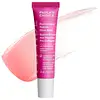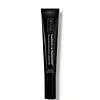What's inside
What's inside
 Key Ingredients
Key Ingredients

 Benefits
Benefits

 Concerns
Concerns

 Ingredients Side-by-side
Ingredients Side-by-side

Hydrogenated Polyisobutene
EmollientPolybutene
Diisostearyl Malate
EmollientBis-Diglyceryl Polyacyladipate-2
EmollientGlyceryl Behenate
EmollientSynthetic Beeswax
Emulsion StabilisingCaprylic/Capric Triglyceride
MaskingButyrospermum Parkii Butter
Skin ConditioningCetearyl Ethylhexanoate
EmollientEthylhexyl Palmitate
EmollientRicinus Communis Seed Oil
MaskingDimethyl Isosorbide
SolventPalmitoyl Tripeptide-1
Skin ConditioningPalmitoyl Tripeptide-38
Skin ConditioningTridecapeptide-1
Skin ConditioningSesamum Indicum Seed Extract
Skin ConditioningPortulaca Pilosa Extract
Skin ConditioningPentylene Glycol
Skin ConditioningPrunus Domestica Seed Oil
Skin ConditioningWater
Skin ConditioningSodium Hyaluronate
HumectantTribehenin
EmollientSorbitan Isostearate
EmulsifyingHydrogenated Castor Oil
EmollientLactic Acid
BufferingTocopherol
AntioxidantSucrose Cocoate
EmulsifyingVanillin
MaskingCI 15850
Cosmetic ColorantHydrogenated Polyisobutene, Polybutene, Diisostearyl Malate, Bis-Diglyceryl Polyacyladipate-2, Glyceryl Behenate, Synthetic Beeswax, Caprylic/Capric Triglyceride, Butyrospermum Parkii Butter, Cetearyl Ethylhexanoate, Ethylhexyl Palmitate, Ricinus Communis Seed Oil, Dimethyl Isosorbide, Palmitoyl Tripeptide-1, Palmitoyl Tripeptide-38, Tridecapeptide-1, Sesamum Indicum Seed Extract, Portulaca Pilosa Extract, Pentylene Glycol, Prunus Domestica Seed Oil, Water, Sodium Hyaluronate, Tribehenin, Sorbitan Isostearate, Hydrogenated Castor Oil, Lactic Acid, Tocopherol, Sucrose Cocoate, Vanillin, CI 15850
Hydrogenated Polyisobutene
EmollientJojoba Esters
EmollientPhenyl Trimethicone
Skin ConditioningTribehenin
EmollientHelianthus Annuus Seed Oil Unsaponifiables
EmollientEthylhexyl Palmitate
EmollientButyrospermum Parkii Butter
Skin ConditioningButyrospermum Parkii Butter Unsaponifiables
Skin ConditioningSodium Hyaluronate
HumectantSucrose Cocoate
EmulsifyingTetrahexyldecyl Ascorbate
AntioxidantTocopheryl Acetate
AntioxidantCamellia Sinensis Leaf Extract
AntimicrobialPalmitoyl Tripeptide-1
Skin ConditioningPalmitoyl Tripeptide-38
Skin ConditioningDipalmitoyl Hydroxyproline
Skin ConditioningPortulaca Pilosa Extract
Skin ConditioningCaprylic/Capric Triglyceride
MaskingButylene Glycol
HumectantCetearyl Ethylhexanoate
EmollientSorbitan Isostearate
EmulsifyingSilica Dimethyl Silylate
EmollientGlyceryl Caprylate
EmollientMentha Arvensis Leaf Oil
MaskingHydrogenated Polyisobutene, Jojoba Esters, Phenyl Trimethicone, Tribehenin, Helianthus Annuus Seed Oil Unsaponifiables, Ethylhexyl Palmitate, Butyrospermum Parkii Butter, Butyrospermum Parkii Butter Unsaponifiables, Sodium Hyaluronate, Sucrose Cocoate, Tetrahexyldecyl Ascorbate, Tocopheryl Acetate, Camellia Sinensis Leaf Extract, Palmitoyl Tripeptide-1, Palmitoyl Tripeptide-38, Dipalmitoyl Hydroxyproline, Portulaca Pilosa Extract, Caprylic/Capric Triglyceride, Butylene Glycol, Cetearyl Ethylhexanoate, Sorbitan Isostearate, Silica Dimethyl Silylate, Glyceryl Caprylate, Mentha Arvensis Leaf Oil
 Reviews
Reviews

Ingredients Explained
These ingredients are found in both products.
Ingredients higher up in an ingredient list are typically present in a larger amount.
This ingredient is also known as shea butter. It is an effective skin hydrator and emollient.
Emollients help soothe and soften your skin. It does this by creating a protective film on your skin. This barrier helps trap moisture and keeps your skin hydrated. Emollients may be effective at treating dry or itchy skin.
Shea butter is rich in antioxidants. Antioxidants help fight free-radicals, or molecules that may harm the body. It is also full of fatty acids including stearic acid and linoleic acid. These acids help replenish the skin and keep skin moisturized.
While Shea Butter has an SPF rating of about 3-4, it is not a sunscreen replacement.
Shea butter may not be fungal acne safe. We recommend speaking with a professional if you have any concerns.
Learn more about Butyrospermum Parkii ButterThis ingredient is an emollient, solvent, and texture enhancer. It is considered a skin-softener by helping the skin prevent moisture loss.
It helps thicken a product's formula and makes it easier to spread by dissolving clumping compounds.
Caprylic Triglyceride is made by combining glycerin with coconut oil, forming a clear liquid.
While there is an assumption Caprylic Triglyceride can clog pores due to it being derived from coconut oil, there is no research supporting this.
Learn more about Caprylic/Capric TriglycerideCetearyl Ethylhexanoate is derived from cetearyl alcohol and sorbic acid.
It is an emollient and helps hydrate the skin. Emollients form a barrier on the skin to prevent water from escaping.
Ethylhexyl Palmitate, also known as octyl palmitate, is created from 2-ethylhexyl alcohol and palmitic acid. It is a fatty acid ester.
The fatty acid content of Ethylhexyl Palmitate makes it an emollient. Emollients help soften and hydrate your skin by trapping moisture within.
Ethylhexyl Palmitate is also used to help improve the texture of cosmetics. It helps other ingredient dissolve in products and help disperse ingredients more evenly.
You'll likely find this ingredient in sunscreen, as it is often used to mix UV-blocking ingredients such as avobenzone and ethylhexyl triazone.
It can also help stabilize the fragrances in a product as a fragrance fixative.
Ethylhexyl Palmitate can be used to substitute mineral oil.
Due to its high fatty acid content, it may not be fungal-acne safe.
Learn more about Ethylhexyl PalmitateHydrogenated Polyisobutene is a synthetic polymer. Polymers are compounds with high molecular weight. Hydrogenated Polyisobutene is an emollient and texture enhancer.
In one study, Hydrogenated Polyisobutene showed better skin hydration levels than Caprylic/Capric Triglyceride. As an emollient, it helps keep your skin soft and hydrated by trapping moisture in.
Hydrogenated Polyisobutene is often used as a mineral oil replacement.
Learn more about Hydrogenated PolyisobutenePalmitoyl Tripeptide-1 is also known as pal-GHK. It is made up of 3 amino acids and palmitic acid, a fatty acid that helps it absorb into skin more easily.
This peptide is as a signal peptide, meaning it tells the skin to produce more collagen. Collagen is the key protein that helps form the skin's structure and keep it plump, firm, and hydrated.
By boosting collagen production, this ingredient supports a stronger skin barrier and helps reduce the appearance of wrinkles.
You'll most likely see this ingredient paired with Palmitoyl Tetrapeptide-7 in the well-known Matrixyl 3000 complex. While results from in-house testing should be viewed cautiously, this peptide duo is among the most studied and widely used in modern skincare.
Due to its palmitic acid base, this ingredient may not be safe for Malassezia folliculitis.
Read more about other common types of peptides here:
Learn more about Palmitoyl Tripeptide-1This synthetic, signal peptide has unique skin conditioning properties in that is a matrikine-mimetic compound.
First of all, Palmitoyl Tripeptide-38 is a signal peptide; signal peptides tell the body to create more collagen.
What is a matrikine-mimetic compound?
This peptide has the ability to mimic matrikines in skin. Our skin created matrikines by breaking down matrix proteins into peptides.
Matrikines play a role in:
Though further research is needed, this ingredient seems pretty promising. In one study, women over the age of 40 with visible photoaging used a vitamin C serum with this ingredient for 56 days (15% ascorbid acid, 5 ppm palmitoyl tripeptide‐38). The results found improvement in skin roughness and skin tone.
This peptide is also part of the famous Matrixyl synthe’6, a blend of ingredients that also includes glycerin, water, and hydroxypropyl cyclodextrin.
Learn more about Palmitoyl Tripeptide-38We don't have a description for Portulaca Pilosa Extract yet.
Sodium Hyaluronate is hyaluronic acid's salt form. It is commonly derived from the sodium salt of hyaluronic acid.
Like hyaluronic acid, it is great at holding water and acts as a humectant. This makes it a great skin hydrating ingredient.
Sodium Hyaluronate is naturally occurring in our bodies and is mostly found in eye fluid and joints.
These are some other common types of Hyaluronic Acid:
Learn more about Sodium HyaluronateSorbitan Isostearate is an emulsifer and cleaning agent. It is created from isostearic acid and sorbitol.
As an emulsifier, Sorbitan Isostearate prevents oils and water from separating.
Due to its isostearic acid base, it may not be safe for Malassezia or fungal acne.
Learn more about Sorbitan IsostearateSucrose Cocoate is created from the sucrose esters of coconut acid. Coconut acid is comprised of the fatty acids of coconut oil.
It is an emulsifier and skin conditioner.
This ingredient may not be fungal acne safe.
Learn more about Sucrose CocoateTribehenin comes from glycerin and behenic acid.
It is used as an emollient, or moisturizer. Emollients form a thin barrier on skin to prevent moisture from escaping.
This ingredient may not be Malassezia folliculitis, or fungal-acne safe.
Learn more about Tribehenin